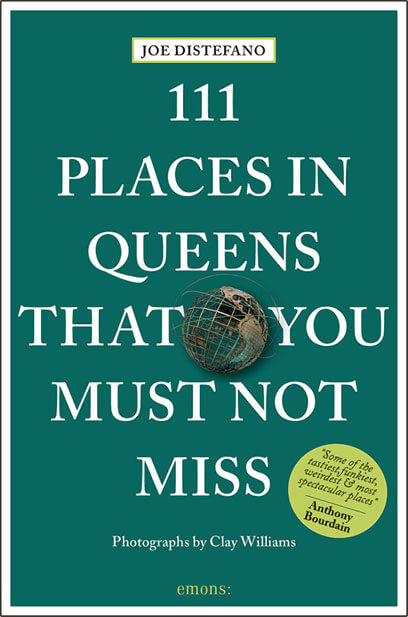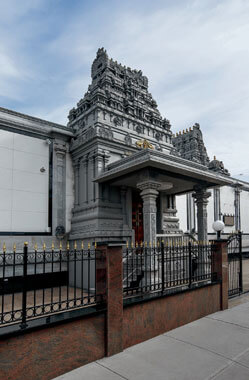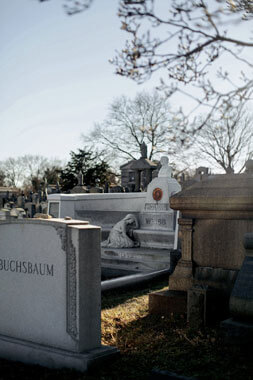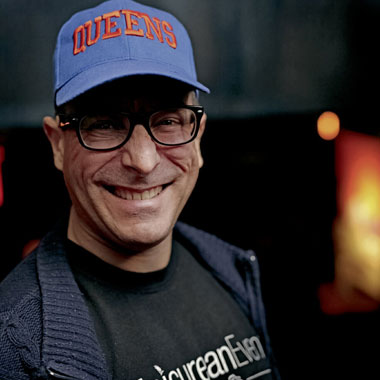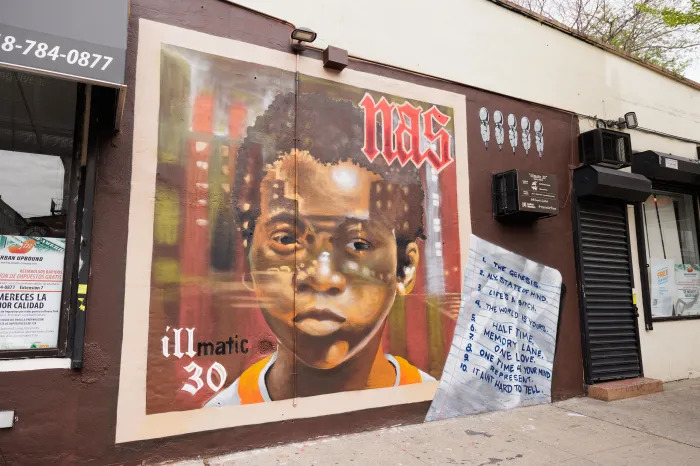By Tammy Scileppi
Brooklyn, step aside. No longer the “forgotten borough,” Queens has been in the spotlight more than ever, and people everywhere are hearing about its strong multicultural vibe and getting to know and appreciate its uniqueness.
So it’s high time that somebody put together a cool and comprehensive guidebook for locals and visitors highlighting all that is Queens, as seen through the eyes of a true fan.
Local food writer Joe DiStefano recently launched “111 Places in Queens That You Must Not Miss.” He teamed up with a good friend, photographer Clay Williams, the man behind the book’s stunning images. The book is the latest in the illustrated “111 Places” guidebook series for locals and experienced travelers, published by Emons Verlag.
You wouldn’t think that a German publisher would collaborate with a foodie like DiStefano on a guidebook, but Karen Seiger, the series’ editor in North America, reached out to him.
“I’ve thought about doing a book about Queens for a while,” said DiStefano, who celebrated his literary achievement with a recent book launch party at Q.E.D. in Astoria. “In a way, you could say that I’ve been amassing material for the book over the past 20 years of exploring food and culture in the world’s borough.”
The adventurous writer spent about two years ”on the road,” visiting neighborhoods across Queens. He mostly took public transit, like the No. 7 train, although some places, like Ohel Chabad-Lubavitch, the final resting place of Rabbi Menachem M. Schneerson in Cambria Heights, required a car.
DiStefano’s goal was to make sure his 230-page book would reflect what he saw and experienced, with eye-catching color photos and descriptive chapters about a cornucopia of landmarks, more obscure sights, secret spots and even cool ethnic shops, as well as off-the-beaten-path eateries.
As DiStefano put it: “There’s everything from Addisleigh Park — an enclave of English Tudors nestled between Jamaica and St. Albans that’s been home to Who’s Who African-American celebrities, including Jackie Robinson and Ella Fitzgerald — to Zapateria Mexico, a store in Corona that specializes in clothing and boots for mariachis and vaqueros.”
He also highlights a variety of quirky places where the seasoned traveler or more casual local explorer can discover surprising hidden gems and, in so doing, see the borough in a whole new light. Two, for example, are a ramp where the Ramones hung out as teenagers, on 66th Avenue between 99th and 102nd Streets in Forest Hills, and Cypress Hills Taxidermy, one of the city’s few remaining taxidermists, in Middle Village.
While there is no chapter on the iconic Unisphere in Flushing Meadows Corona Park, it is mentioned several times, and it appears on the book’s front cover. DiStefano said the glittering stainless globe is “near and dear to his heart.” Though he was born in Queens, the youngest of four boys, he grew up on Long Island and, sadly, had no memories of his native borough.
“But most every Sunday,” he said “we would visit my grandmother in Glendale, and on the ride, I would always be fascinated to glimpse the Unisphere from the highway and hear my mother talk about attending the 1964-1965 World’s Fair with my brothers.
“I like to say that I was so jealous of their experience that half a century later, I wrote a guidebook to the world’s borough.”
DiStefano’s food writing has appeared in Serious Eats, Edible Queens, Gourmet, and The New York Times. He established Chopsticks & Marrow, a Queens-centric food blog, in 2013, and co-founded the New York Epicurean Events series three years ago.
“Certainly, my food explorations gave me a good grounding in many of the borough’s neighborhoods and cultures,” he said, pointing out that among his favorite food spots are Flushing’s Golden Shopping Mall, a ramshackle Chinese food court; Astoria’s Muncan Food Corp., an Old World Romanian butcher shop; and the Ganesh Temple, which serves wonderful vegetarian South Indian fare in its canteen in Flushing.
“I also like Downtown Flushing a lot, and not just because I lead food tours of what I like to call America’s Greatest Chinatown,” he said, adding: “I’m also a big fan of Queens’s second smaller Chinatown, Elmhurst, which is the best place in New York City for Thai and Indonesian food. Also, Jackson Heights because of the concentration of diversity. It’s the most diverse part — Indian, Colombian, Mexican, Thai, Bangladeshi, Tibetan, Nepalese — of the most diverse borough.”
When DiStefano agreed to compile the book, he began by devising a list of places. “One of the first things I was told by my editor and publisher was, ‘There’s too much food on the list,’ which made me think, ‘Don’t they know who they hired?’”
Once he had a list with a good balance of food, architectural points of interest, religious institutions, quirky sights, landmarks and so forth, the real adventure began: visiting each place and getting the story. He followed a steep forest trail in Oakland Gardens to glimpse what is thought to be New York City’s oldest living organism, the tree known as the Alley Pond Giant, and he hiked three miles along the cemetery belt bordering Brooklyn in order to find Harry Houdini’s grave.
The guidebook portrays a borough steeped in history, from the Old Quaker Meeting House in Flushing, which has been in use since 1694, to the Steinway & Sons Factory in Astoria, which has manufactured pianos since 1870.
“Queens is one of the last places in New York City where there’s a real sense of neighborhood and culture,” the author said.
The guidebook is available on Amazon and at the Lockwood boutiques in Astoria and Jackson Heights, as well as the Astoria Bookshop and Kew & Willow Books.

